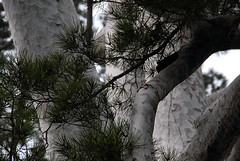See all Gardens in Beijing
Bei Hai Gongyuan (Beihai Park)
Xi Cheng Qu (south entrance is just west of the north gate of the Forbidden City; east entrance is opposite the west entrance of Jing Shan Park)About
An imperial playground dating back to the Tartar Jin dynasty (1115-1234), Bei Hai lies to the north of Zhong Hai and Nan Hai, which were also opened to the public in 1925. In the best tradition of Animal Farm, the Communist leaders created a new Forbidden City and named it Zhong Nan Hai. Bei Hai was left to the masses. Although it's a convenient way to combine a morning visit to the Forbidden City with a more relaxing afternoon in the Back Lakes area, most visitors have a quick peek at the southern half and then disappear. Unfortunately, they miss the north side of the park, which is more interesting. Entering from the south, you come to Tuan Cheng (Round City), a small citadel on a raised platform whose most notable structure, Chengguang Dian, houses a 1.5m-tall (5-ft.) statue of a feminine-looking Buddha, crafted from Burmese white jade. Crossing the Yong'an Bridge to Qiong Dao (Qiong Islet), you soon reach Yong'an Si, where the founder of the prominent Geluk sect, Tsongkapa, was the focus of devotion. He is now portrayed as a Chinese reformer of corrupt Tibetan Buddhism, on the grounds that he was born in Qinghai rather than "autonomous" Tibet. From here, boats run to the north side of the park for ÃÂÃÂÃÂÃÂ¥5 (65ÃÂÃÂÃÂâ/35p), or you can walk around the east side, passing calligraphers wielding enormous sponge-tipped brushes to compose rapidly evaporating poems on the flagstones. Boats pull in to the east of Wu Long Ting (Five Dragon Pavilion), where aspiring singers treat the public to revolutionary airs popular in the 1950s. Off to the left is an impressive green-tiled pailou (memorial arch; the green tiles signify a religious purpose, in contrast to the yellow imperial tiles of the Forbidden City and Guo Zi Jian). Continue on to the square-shaped Jile Shijie Dian, encircled by a dry moat. Built by the Qianlong emperor to honor his mother, the sandalwood structure is exquisite, topped with a priceless gold dome (apparently too high for either foreign troops or local warlords to reach). The gaudy fiberglass statuary inside brings you back to the present. To the west stands an impressive Nine Dragon Screen, which guarded the entrance to a now-vanished temple. Further east is Daci Zhenru Bao Dian, an atmospheric Buddhist hall built during the late Ming from unpainted cedar; topped with a black roof (to protect the precious wood from fire), it has a cool slate floor. Continue east to the northern exit onto Ping'an Dadao, which marks the southern end of the Shicha Hai (Back Lakes) area.
